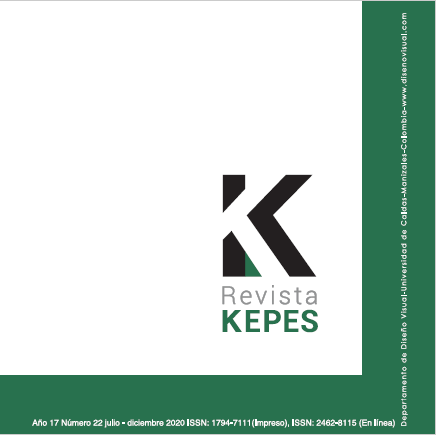Authors
Abstract
Virtual laboratories are effective means in the development of professional skills. In their development, reality is ususlly mimicked in search of a better immersion experience with the design of hyper-realistic environments and interfaces which results in great complexity and high costs associated with its implementation. This study proposes a group of requirements to be considered in the design and production of virtual laboratories with a focus on the immersion experience in non-immersive contexts. These requirements consider design from a holistic perspective in favor of an immersion experience that considers dimensions such as didactic, external and internal authenticity, in correspondence with its relevance, attachment to reality and coherence. Two research cycles were carried out. In the first cycle, three research projects in the development of virtual laboratories were systematized and the requirements were defined. In the second cycle, the requirements were submitted to expert judgment through the Delphi method which allowed the proposal to be improved and validated. Finally, the definition of 22 immersion experience design requirements in the development of virtual laboratories was proposed. The result is particularly useful for developers and educators in designing learning experiences.
Keywords
References
Alessi, S. M. (1988). Fidelity in the Design of Instructional Simulations. Journal of Computer-Based Instruction, 15(2), 40-47. Retrieved October 16, 2020 from https://www.learntechlib.org/p/170285/.
Atkinson, P. (2006). Rescuing autoethnography. Journal of contemporary ethnography, 35(4), 400-404. https://doi.org/10.1177/0891241606286980
Blanco, Mercedes. (2012). Autoetnografía: una forma narrativa de generación de conocimientos. Andamios, 9(19), 49-74. Recuperado en 16 de octubre de 2020, de http://www.scielo.org.mx/scielo.php?script=sci_arttext&pid=S1870-00632012000200004&lng=es&tlng=es.
Calvo, I., Zulueta, E., Gangoiti, U. y López, J. M. (2008). Laboratorios remotos y virtuales en enseñanzas técnicas y científicas. Ikastorratza, 3, 1-21.
Couture, M. (2004). Realism in the design process and credibility of a simulation-based virtual laboratory. Journal of Computer Assisted Learning, 20(1), 40-49. https://doi.org/10.1111/j.1365-2729.2004.00064.x
Dalgarno, B., & Lee, M. J. (2010). What are the learning affordances of 3-D virtual environments? British Journal of Educational Technology, 41(1), 10-32. https://doi.org/10.1111/j.1467-8535.2009.01038.x
Dormido Bencomo, S., Sánchez Sánchez, J. y Morilla García, F. (2000). Laboratorios virtuales remotos para la práctica a distancia de la automática. XXI Jornadas de Automática, Conferencia plenaria, Sevilla.
Elliott, W. R., Rudd, L. R., & Good, L. (1983, August). Measuring perceived reality of television: Perceived plausibility, perceived superficiality, and the degree of personal utility. Paper presented at the Association for Education in Journalism and Mass Communication Annual Conference, Corvallis, Oregon.
Ellis, C. (1999). Heartful autoethnography. Qualitative Health Research, 9(5), 669-683. https://doi.org/10.1177/104973299129122153
Francis, A. & Couture, M. (2003). Credibility of a simulation-based virtual laboratory: An exploratory study of learner judgments of verisimilitude. Journal of Interactive Learning Research, 14(4), 439-464. Norfolk, VA: Association for the Advancement of Computing in Education (AACE). Retrieved October 17, 2020 from https://www.learntechlib.org/primary/p/2066/.
Gibson, J. J. (2014). The Ecological Approach to Visual Perception: Classic Edition. Psychology Press. https://doi.org/10.4324/9781315740218
Gonçalves, C., Croset, M. C., Ney, M., Balacheff, N., & Bosson, J. L. (2010). Authenticity in learning game: how it is designed and perceived. En European Conference on Technology Enhanced Learning (pp. 109-122). Springer.
Makransky, G., Terkildsen, T. S., & Mayer, R. E. (2017). Adding immersive virtual reality to a science lab simulation causes more presence but less learning. Learning and Instruction. https://doi.org/10.1016/j.learninstruc.2017.12.007
Monge Nájera, Julián, & Méndez Estrada, Víctor Hugo (2007). Ventajas y desventajas de usar laboratoriosvirtuales en educación a distancia:la opinión del estudiantado en un proyectode seis años de duración. Revista Educación, 31(1), 91-108.[fecha de Consulta 16 de Octubre de 2020]. ISSN: 0379-7082. Disponible en: https://www.redalyc.org/articulo.oa?id=440/44031106
Monge-Nájera, J., Rivas, M., & Méndez-Estrada, V. H. (2002). La evolución de los laboratorios virtuales durante una experiencia de cuatro años con estudiantes a distancia. En XI Congreso Internacional sobre Tecnología y Educación a Distancia (Vol. 5).
Morcillo Ortega, J. G. (2008). Los laboratorios virtuales aplicados a la biología en la enseñanza secundaria. Una evaluación basada en el modelo “CIPP” (PhD Thesis). Universidad Complutense de Madrid.
Nielsen, J. (1999). Designing Web Usability: The Practice of Simplicity. Thousand Oaks, CA, USA: New Riders Publishing.
Ozdemir, E., Ustun, U., & Bagriyanik, K. E. (2017). How credible are the virtual laboratories? A comparison of the photographic and non-photographic virtual experiments about resistivity. Presentado en ESERA 2017 Conference (p. 3).
Piassentini, M. J., & Occelli, M. (2012). Caracterización de Laboratorios Virtuales para la enseñanza de la Ingeniería Genética. En Garcia L., Buffa L. M., Liscovsky, I., Malin Vilar T. G. (Comps.) Memorias de las X Jornadas Nacionales y V Congreso Internacional de Enseñanza de la Biología (pp. 671-676).
Ribbens, W. (2013). Perceived game realism: A test of three alternative models. Cyberpsychology, Behavior, and Social Networking, 16(1), 31-36. https://doi.org/10.1089/cyber.2012.0212
Ribbens, W., & Malliet, S. (2010). Perceived digital game realism: A quantitative exploration of its structure. Presence: Teleoperators and Virtual Environments, 19(6), 585-600. https://doi.org/10.1162/pres_a_00024
Ribbens, W., Malliet, S., Van Eck, R., & Larkin, D. (2016). Perceived realism in shooting games: Towards scale validation. Computers in Human Behavior, 64, 308-318. https://doi.org/10.1016/j.chb.2016.06.055
Slater, M. (2004). How colorful was your day? Why questionnaires cannot assess presence in virtual environments. Presence: Teleoperators & Virtual Environments, 13(4), 484-493. https://doi.org/10.1162/1054746041944849
Unluer, S. (2012). Being an Insider Researcher While Conducting Case Study Research. The Qualitative Report, 17(29), 1-14. Retrieved from https://nsuworks.nova.edu/tqr/vol17/iss29/2
Von der Gracht, H. A. (2012). Consensus measurement in Delphi studies. Technological Forecasting and Social Change, 79(8), 1525-1536. https://doi.org/10.1016/j.techfore.2012.04.013
Witmer, B. G., & Singer, M. J. (1998). Measuring presence in virtual environments: A presence questionnaire. Presence, 7(3), 225-240. https://www.mitpressjournals.org/doi/abs/10.1162/105474698565686
C.Zacharia., & Olympiou, G. (2011). Physical versus virtual manipulative experimentation in physics learning. Learning and Instruction. 21(3), 317-31. https://doi.org/10.1016/j.learninstruc.2010.03.001

 pdf (Español (España))
pdf (Español (España))
 FLIP
FLIP






















